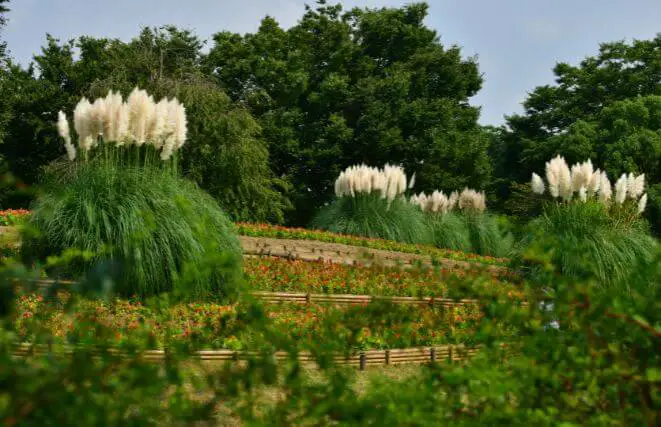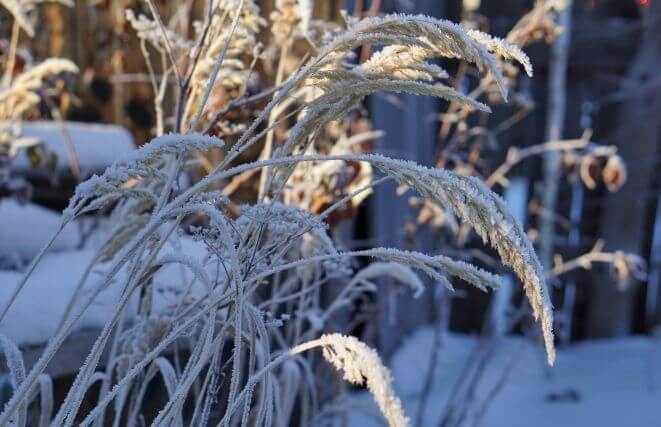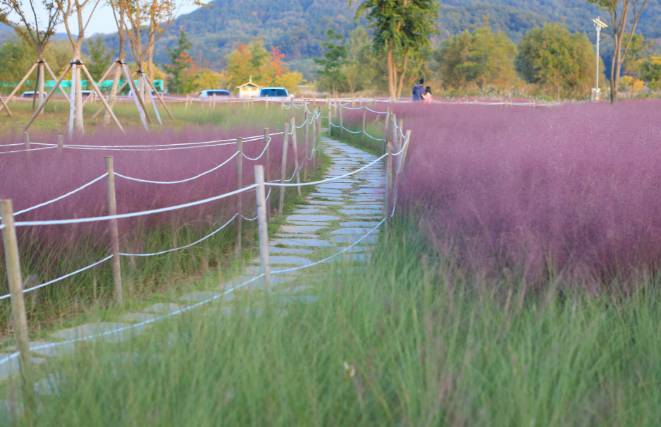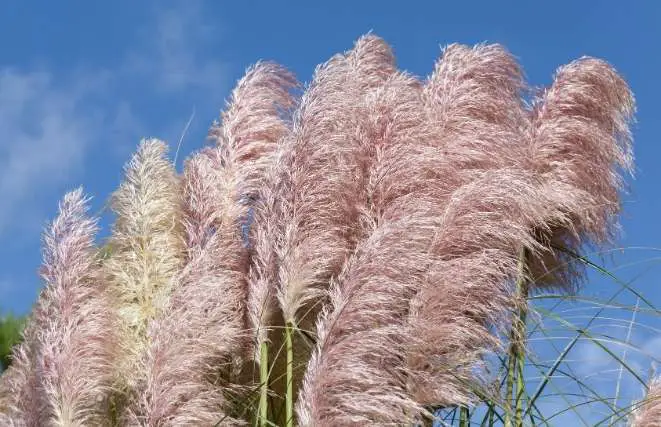Pampas grass is a stunning ornamental grass that can add beauty and drama to any garden. It has tall, feathery plumes that sway in the wind and create a striking focal point. Pampas grass is also drought-tolerant, disease-resistant, and fast-growing, making it a low-maintenance plant that can thrive in a variety of conditions.
How to Plant Pampas Grass
If you are ready to grow pampas grass in your garden, here are some tips on when and where to plant it, how to care for it, and how to enjoy its beauty.
Choosing the Right Location
Before you start planting pampas grass, you need to choose the right location for it. Pampas grass thrives in full sunlight and well-drained soil. It is important to choose a location that receives at least 6 hours of direct sunlight per day.
Soil Requirements
Pampas grass grows best in well-drained soil that is slightly acidic. If your soil is too alkaline, you can add some sulfur to lower the pH level. If your soil is too sandy, you can add some compost or organic matter to improve its texture and nutrient content.
Preparing the Planting Site
Once you have chosen the right location for your pampas grass, it is time to prepare the planting site. Start by clearing the area of weeds and debris. You can use a hoe or a rake to remove any weeds or grass that might be growing in the area.
Next, dig a hole that is twice the width of the root ball of your pampas grass plant. Make sure the hole is deep enough to accommodate the entire root system of the plant.
Planting the Pampas Grass
Now that you have prepared the planting site, it is time to plant the pampas grass. You can plant pampas grass from seeds, but it is easier and faster to plant it from root divisions.
Planting from Root Divisions
To plant pampas grass from root divisions, start by removing the plant from its container or digging it up from its original location. Use a sharp knife to cut the root system into smaller pieces. Each piece should have at least one healthy shoot and a portion of the root system.
Place each root division into the hole you dug earlier and cover it with soil. Make sure the plant is level with the ground and the soil is firmly packed around the roots.
Water the plant thoroughly after planting to help settle the soil around the roots.
When to Plant Pampas Grass
The best time to plant pampas grass is from spring to mid-June, when the soil is warm and moist. This will give your plant enough time to establish its roots before winter. You can either start with seeds or young plants from a nursery or garden center.
If you choose to grow pampas grass from seeds, you need to sow them indoors from February to April. Use small pots filled with fresh potting soil and sprinkle the seeds on top. Do not cover them with soil, as they need light to germinate. Water them lightly and keep them in a warm and bright place. The seeds should sprout within 20 to 25 days.
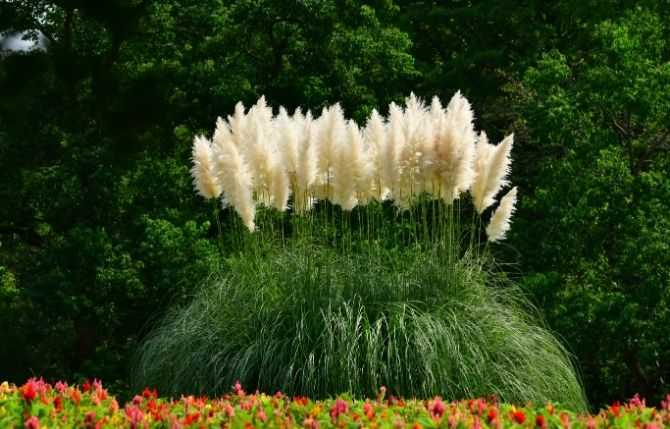
Once the weather is warmer and the seedlings have at least two leaves, you can transplant them into your garden. Choose a sunny spot with well-drained soil and dig holes that are three times as wide and deep as the root ball of each seedling. Add some organic matter, such as compost or manure, to the holes and mix it with the soil. Place the seedlings in the holes and fill them with soil. Water them well and mulch around them to retain moisture and prevent weeds.
If you choose to buy young plants from a nursery or garden center, you can skip the sowing process and plant them directly into your garden. Follow the same steps as above, but make sure the holes are the same size as the root ball of each plant. Water them well after planting and mulch around them.
Where to Plant Pampas Grass
Pampas grass needs a lot of space to grow, so make sure you choose a location that can accommodate its size. Ideally, you should plant pampas grass at least 6 feet apart from each other and from other plants. This will prevent overcrowding and allow air circulation.
Pampas grass also needs a lot of sun to thrive, so choose a spot that gets at least 6 hours of direct sunlight per day. However, it can tolerate some shade, especially in hot climates. Avoid planting pampas grass near roads or driveways, as it can obstruct your view and cause accidents. Also avoid planting it near central air conditioning units or fans, as its leaves can get caught in them and damage them.
One thing to consider before planting pampas grass is its invasiveness potential. Pampas grass can produce thousands of seeds that can spread by wind or animals and colonize new areas. In some states, such as California and Texas, pampas grass is considered an invasive weed and is banned from planting. In other areas, such as New Zealand and Hawaii, pampas grass is completely prohibited due to its negative impact on native ecosystems. Check your local laws before planting pampas grass in your garden.
How to Care for Pampas Grass
Pampas grass is a low-maintenance plant that does not require much attention once established. However, there are some things you can do to keep it healthy and beautiful.
- Watering: Pampas grass is drought-tolerant and can survive with little water once established. However, it will appreciate regular watering during its first year of growth and during dry spells. Water deeply once a week or whenever the soil feels dry to the touch.
- Fertilizing: Pampas grass does not need much fertilizer either, but you can apply a balanced fertilizer once or twice a year in spring and summer to boost its growth and flowering.
- Pruning: Pampas grass does not need pruning for shape or size, but you may want to trim off any dead or damaged leaves or plumes in late winter or early spring before new growth emerges. Use sharp pruning shears or a saw and wear gloves and long sleeves to protect yourself from the sharp edges of the leaves.
- Dividing: Pampas grass can grow very large over time and may need dividing every few years to prevent overcrowding and rejuvenate its vigor. The best time to divide pampas grass is in late winter or early spring when it is dormant. Use a shovel or a spade to dig up the entire clump of pampas grass and cut it into smaller sections with a sharp knife or saw. Make sure each section has at least one healthy stem and some roots attached. Replant the sections in new locations or give them away to friends or neighbors.
- Controlling: To prevent pampas grass from spreading too much or becoming invasive in your area, you may want to remove any unwanted seedlings that sprout around your plant or nearby areas. You can also cut off the flower plumes before they produce seeds and dispose of them properly.
How to Enjoy Pampas Grass
Pampas grass is not only a beautiful plant for your garden but also a great source of decoration for your home. You can cut off some of the flower plumes when they are fully mature in late summer or fall and dry them for indoor use.
To dry pampas grass plumes, simply hang them upside down in a warm and dry place for two weeks or until they are completely dry. You can then arrange them in vases or baskets or use them for wreaths or other crafts.
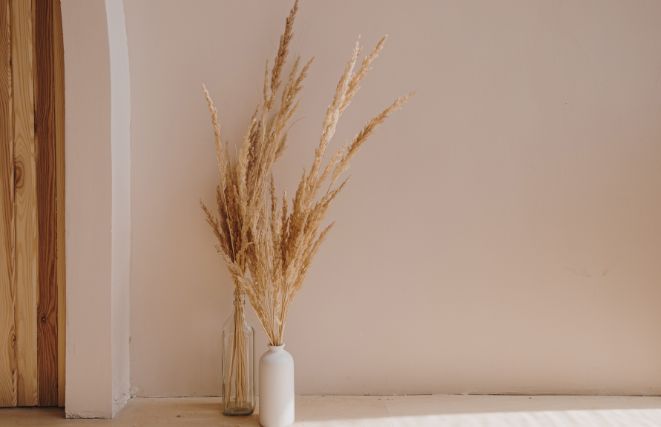
Pampas grass plumes can last for years if kept away from moisture and direct sunlight. You can also spray them with hairspray or clear lacquer to make them more durable and prevent shedding.
Pampas grass is a versatile plant that can add beauty and interest to any garden or home. With proper care and control, you can enjoy its graceful plumes for years to come.
Conclusion
Planting pampas grass is a great way to add beauty and interest to your landscape. With a little bit of preparation and care, you can enjoy healthy and beautiful pampas grass for years to come. Remember to choose a sunny location with well-drained soil, plant your pampas grass from root divisions, and water and fertilize it regularly. If you encounter any problems, such as overwatering or pests, address them promptly to ensure healthy growth. By following these tips, you can successfully plant and care for pampas grass in your own backyard.

